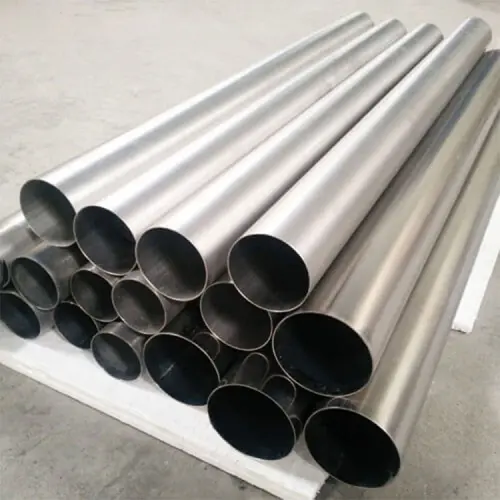Under high-temperature conditions, High-temperature titanium pipes have become the preferred material for harsh environments, such as those in chemical engineering and aerospace, due to their excellent resistance to high-temperature oxidation and corrosion. Its selection and application should be based on rigorous technical considerations to ensure the long-term reliable operation of the equipment.

1、 Material selection: matching high temperature characteristics
Core materials: Mainly using industrial pure titanium (such as Gr2) or titanium alloys (such as Ti-6Al-4V/Gr5). Pure titanium has good heat resistance and corrosion resistance below 300 ℃; Ti-6Al-4V alloy provides higher strength, toughness, and creep resistance at higher temperatures (approximately 315-400 ℃).
Surface treatment: When necessary, anodizing and other processes can be used further to improve surface hardness and corrosion resistance in specific media.
2、 Design key: thermal stability and heat transfer efficiency
Thermal management: In high-temperature applications, the design of High-temperature titanium pipes should focus on thermal stability and efficient heat exchange. Active cooling schemes such as jacketed heat exchangers or cooling water systems are often integrated to effectively control the temperature of the pipe wall and prevent material performance degradation.
Structural design: Accurately calculate and design parameters such as pipe wall thickness and diameter to ensure sufficient mechanical strength and structural stability under high temperature and pressure.
3、 Core performance requirements
High-temperature titanium pipes need to meet the following key performance indicators:
Excellent high temperature stability and oxidation resistance
Excellent corrosion resistance (especially for acidic, chloride, and other media)
Good thermal conductivity efficiency
High reliability (long lifespan, low failure rate)
Manufacturers need to conduct strict high-temperature creep testing, corrosion testing, and other certifications on materials in accordance with ASME B&PV Code, ASTM standards (such as ASTM B338), and other specifications.
4、 Typical industrial applications
Chemical industry: pipelines for transporting high-temperature corrosive media (acids, alkalis, salt solutions, process gases); Core components of heat exchangers and reactors.
Aerospace: High-temperature fluid piping systems related to engines.
Energy sector: partial cooling systems for nuclear power plants; high-temperature seawater/steam corrosion-resistant components in geothermal and marine energy equipment.
5、 Installation and maintenance support
Professional installation: Ensure that the pipeline support is stable, strictly follow the manufacturer's specifications for installation and commissioning, and prevent stress concentration.
Scientific maintenance: Establish a regular inspection system, including cleaning the heat exchange surface (anti-scaling), checking the condition of seals, lubricating moving parts, etc., to promptly eliminate hidden dangers.
summarize
The successful application of High-temperature titanium pipes in high-temperature environments relies on precise material selection (pure titanium or suitable titanium alloys), optimized thermal design (integrated high-efficiency cooling system), strict quality certification (in compliance with ASME/ASTM standards), and standardized installation and maintenance. Scientific selection and correct use of titanium pipes are important technical foundations for ensuring long-term safe, stable, and efficient operation of equipment in key fields such as chemical engineering, aerospace, and other high-temperature, high-pressure, and highly corrosive industries.











